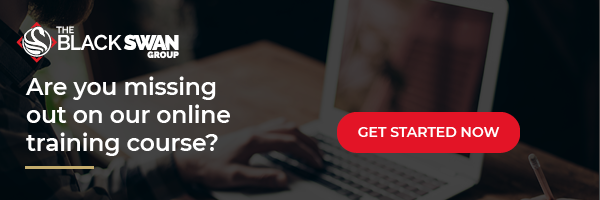Labels are the best information-gathering device out there. Bar none. This is so true that Brandon Voss of The Black Swan Group has even designated a subset of labels known as asking labels.
Why are we traditionally taught to ask questions? Because it’s the easiest way to gather information, or so teachers say.
The Black Swan Group actually defines negotiation as an information-gathering and influence-building process. The problem is that most of the time, truth questions are a lousy way to gather information.
In fact, two of the three negotiator types react to questions posed as questions as if they were traps. (We’re looking at you, assertives and analysts, in particular!)
Rapport is a lubricant for information flow—in all cases. The better we get along with one another, the more likely we are to open up and share what’s on our mind.
This is one of the reasons that a law enforcement study was finally conducted to compare the effectiveness of rapport-based interrogation techniques versus harsher interrogation techniques.
The conclusion? Rapport-based interrogation was “the closest thing interrogators have to a truth serum.” In other words, rapport-based interrogation won hands down.
Why Labels Work Better Than Calibrated Truth Questions
When teaching one of our business clients to use labels instead of calibrated questions (e.g., what and how questions) she stated, “Labels unlock the floodgates of truth talk.”
There seems to be a pattern emerging here.
Labels allow us to attach tentative descriptors to the dynamics, emotions, and circumstances that the other side is implying. By using labels, you’re attempting to gain an understanding of what’s going on in the other side’s mind without necessarily committing to any one belief.
Even when you use a mislabel—or label something incorrectly—you’re still able to uncover more information. Using phrases like It seems or It sounds like gives you an out.
“I didn’t say I necessarily believed that. I just said it seemed that way.”
Crisis averted, negotiation recommenced.
So, what should you do?
Prior to heading into a negotiation, do a bit of homework up front. As part of your preparation, come up with a corresponding asking label for each calibrated question you see yourself asking. Use the label first to gather the information you need.
Here are a few examples to give you a better idea of what we’re talking about:
| Calibrated Question: | Corresponding Asking Label: |
| How would you like to proceed? |
Seems like you have an idea as to how to proceed. |
| What are the next steps? |
Seems like you have a feel for the next steps. |
| What stands in our way? |
Seems like you have an idea as to what stands in the way. |
| What’s the biggest challenge you face? |
Seems like you have a feel for the what the biggest challenge you’re facing is. |
| How can I help you? |
Seems like you’ve got an idea about how I can help. |
| What do you have in mind? |
Seems like you’ve got something on your mind. |
| What’s going on? |
Seems like something’s going on. |
After you get a feel for these, you can of course adapt the labels slightly to get even more specific and uncover more information.
You will find that either the calibrated question or the label will be the key to opening the other side up and unlocking the floodgates of information.
You are free to (and in fact should) toggle back and forth between the two negotiation tools as needed.
Start with the label. Follow up with the calibrated question. Sit back, let the tools do their job, and make it rain!


